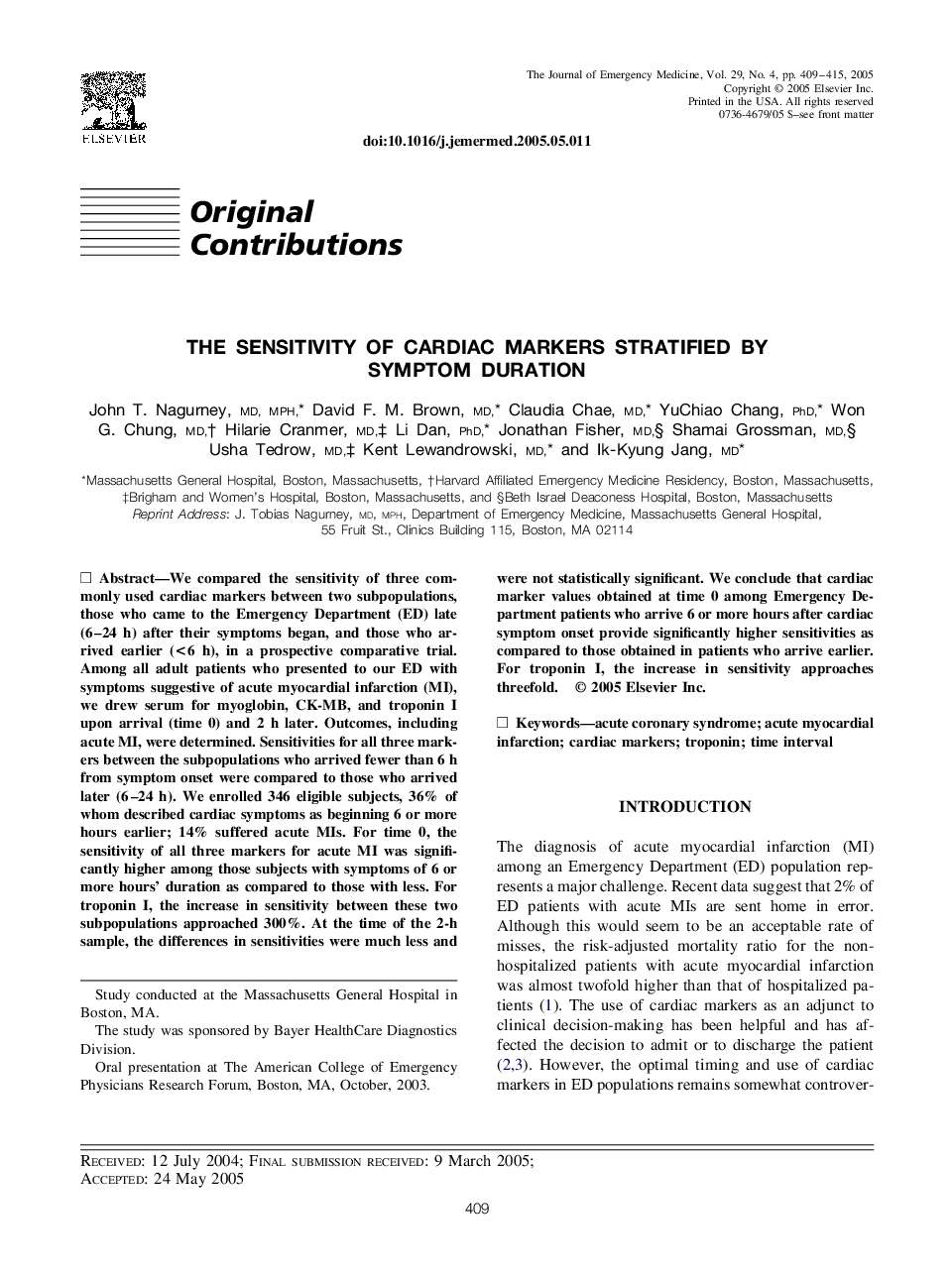| Article ID | Journal | Published Year | Pages | File Type |
|---|---|---|---|---|
| 10021623 | The Journal of Emergency Medicine | 2005 | 7 Pages |
Abstract
We compared the sensitivity of three commonly used cardiac markers between two subpopulations, those who came to the Emergency Department (ED) late (6-24 h) after their symptoms began, and those who arrived earlier (<6 h), in a prospective comparative trial. Among all adult patients who presented to our ED with symptoms suggestive of acute myocardial infarction (MI), we drew serum for myoglobin, CK-MB, and troponin I upon arrival (time 0) and 2 h later. Outcomes, including acute MI, were determined. Sensitivities for all three markers between the subpopulations who arrived fewer than 6 h from symptom onset were compared to those who arrived later (6-24 h). We enrolled 346 eligible subjects, 36% of whom described cardiac symptoms as beginning 6 or more hours earlier; 14% suffered acute MIs. For time 0, the sensitivity of all three markers for acute MI was significantly higher among those subjects with symptoms of 6 or more hours' duration as compared to those with less. For troponin I, the increase in sensitivity between these two subpopulations approached 300%. At the time of the 2-h sample, the differences in sensitivities were much less and were not statistically significant. We conclude that cardiac marker values obtained at time 0 among Emergency Department patients who arrive 6 or more hours after cardiac symptom onset provide significantly higher sensitivities as compared to those obtained in patients who arrive earlier. For troponin I, the increase in sensitivity approaches threefold.
Related Topics
Health Sciences
Medicine and Dentistry
Emergency Medicine
Authors
John T. MD, MPH, David F.M. MD, Claudia MD, YuChiao PhD, Won G. MD, Hilarie MD, Li PhD, Jonathan MD, Shamai MD, Usha MD, Kent MD, Ik-Kyung MD,
